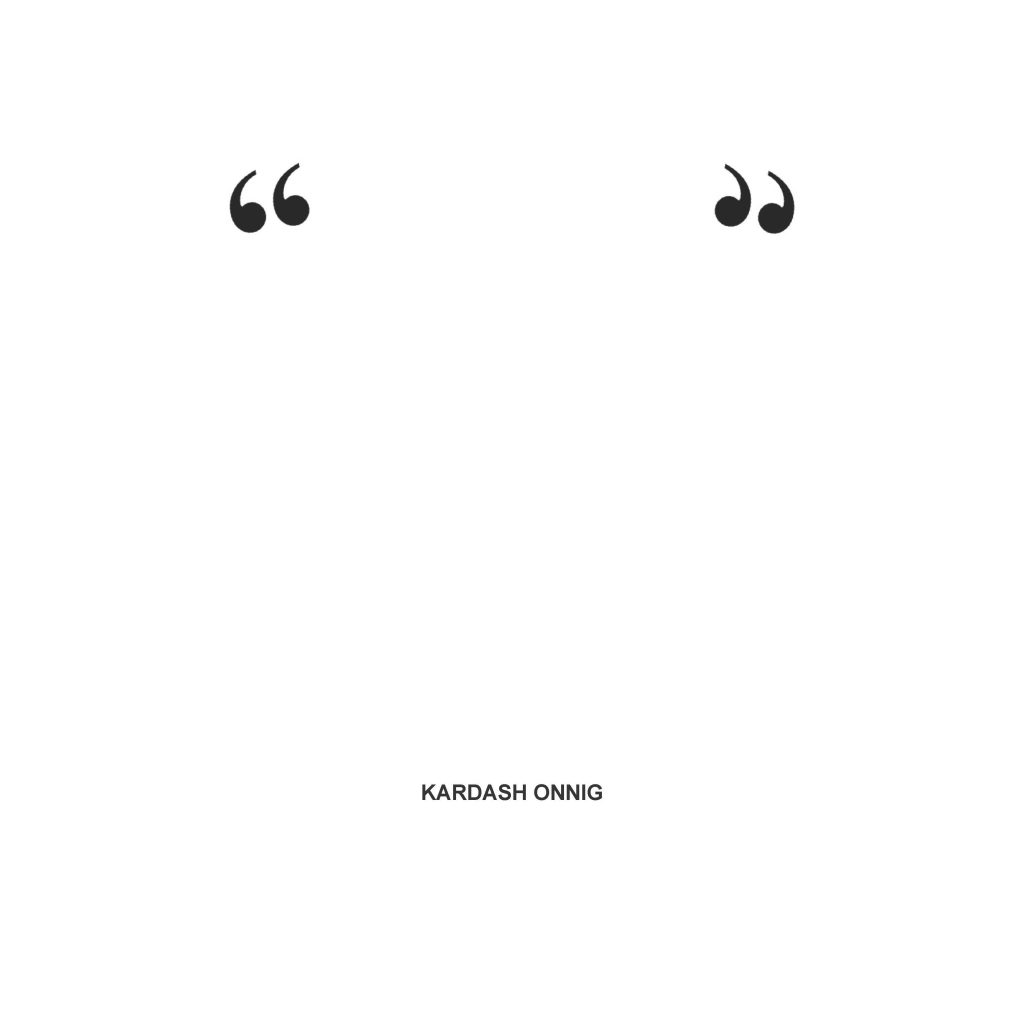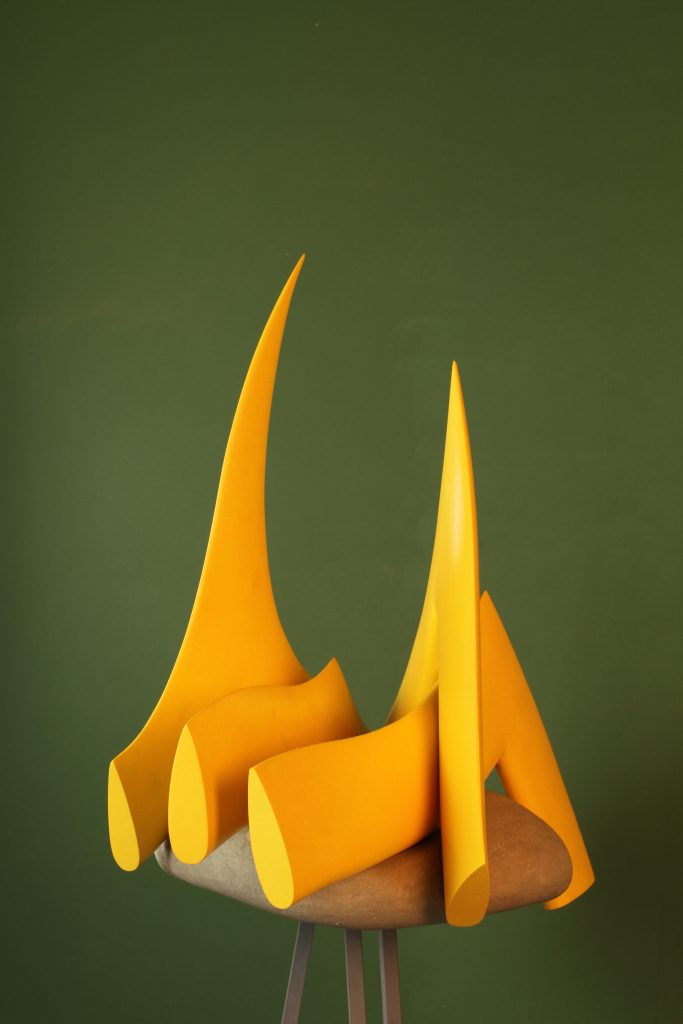Kardash Onnig’s recently published booklet, with an as-yet unnamed title—” “—, sums up the artist’s life-long effort to develop universal “tools of communication” that would transform a culture that thrives on two-dimensionality into a three-dimensional construct. The slim volume gathers up images of some of the most striking forms the artist has created to materialize his vision of three-dimensionality. These images alternate with brief texts that outline the philosophy behind the creations. The elegant all-white package brings it all together. It is a joy to hold and to behold.
Onnig starts off by making a connection between our current urge to dominate—“the basest of human instincts”—and the two-dimensionality of our histories. He deplores the religions and the national languages–all hallmarks of two-dimensionality–that have limited our ability to change by imposing rigid borders and by instilling in us a lack of tolerance for the other.
“Men and nations are killing and destroying at a scale and with a ferocity that breaks records on a daily basis,” he writes. The artist has, in fact, devoted his entire life to exploring an alternate system of values that would steer us free of two-dimensionality, and “what surely must be its inevitable dreadful end.” At the core of his effort is the belief that a three-dimensional consciousness, with its focus on a hands-on work ethic that would help evolve our senses to their third dimensions, would break down our current divisions and guide us to peace and to harmony.
“ “ articulates an inscrutable philosophy astonishingly clearly. Kardash adds reason to intuition, and backs his claims with his extensive reading of history and of philosophy, perhaps ironic for one who so vehemently dismisses books and computers–the very mechanisms on which human transaction has depended through the millennia—“because of their inherent two-dimensionality.”

Stress point model for the inner acoustics of the MEHIAN, 1976 – Temple in Stanfordville, N.Y. (Photo: Seiji Kakizaki)
It may also seem paradoxical to speak of clarity when one has little more to go by than brief, almost epigrammatic, statements that describe a philosophy the artist himself is still trying to understand. Nonetheless, Onnig lures the reader to do her own search for the “tools” that would enable the human species to evolve into a three-dimensional consciousness.
Throughout a career that spans many decades, Kardash has been constant in his advocacy for change. “We cannot demand two-dimensional narratives in a three-dimensional world,” he writes with conviction. One would think that when two-dimensionality has caused nothing but hatred and destruction for mankind, it would make sense to consider a replacement.
Admittedly, something will always remain elusive in a philosophy that is, in the artist’s own words, “impermeable to the labors of the human intellect.” What is not elusive, however, is Onnig’s unshakable belief in the limitations of two-dimensionality, and the aesthetic appeal of the pieces so harmoniously put together to transfer the spirit of three-dimensionality.
The little volume evidences the artist’s ongoing evolution. It is yet another reminder of a creative energy that has never ceased to surprise us. And while it sums up Onnig’s life-long career, the booklet does not conclude his efforts to keep “this ‘ ‘—this as-yet unnamed thing—alive, and evolving.” Despite the doomscalling, “I know, in my heart of hearts, that genuine transformation can take root,” he writes.
“What next?” is all we can ask.
Source: Armenian Weekly
Link: A Summing-up: Kardash Onnig’s Latest Offering


